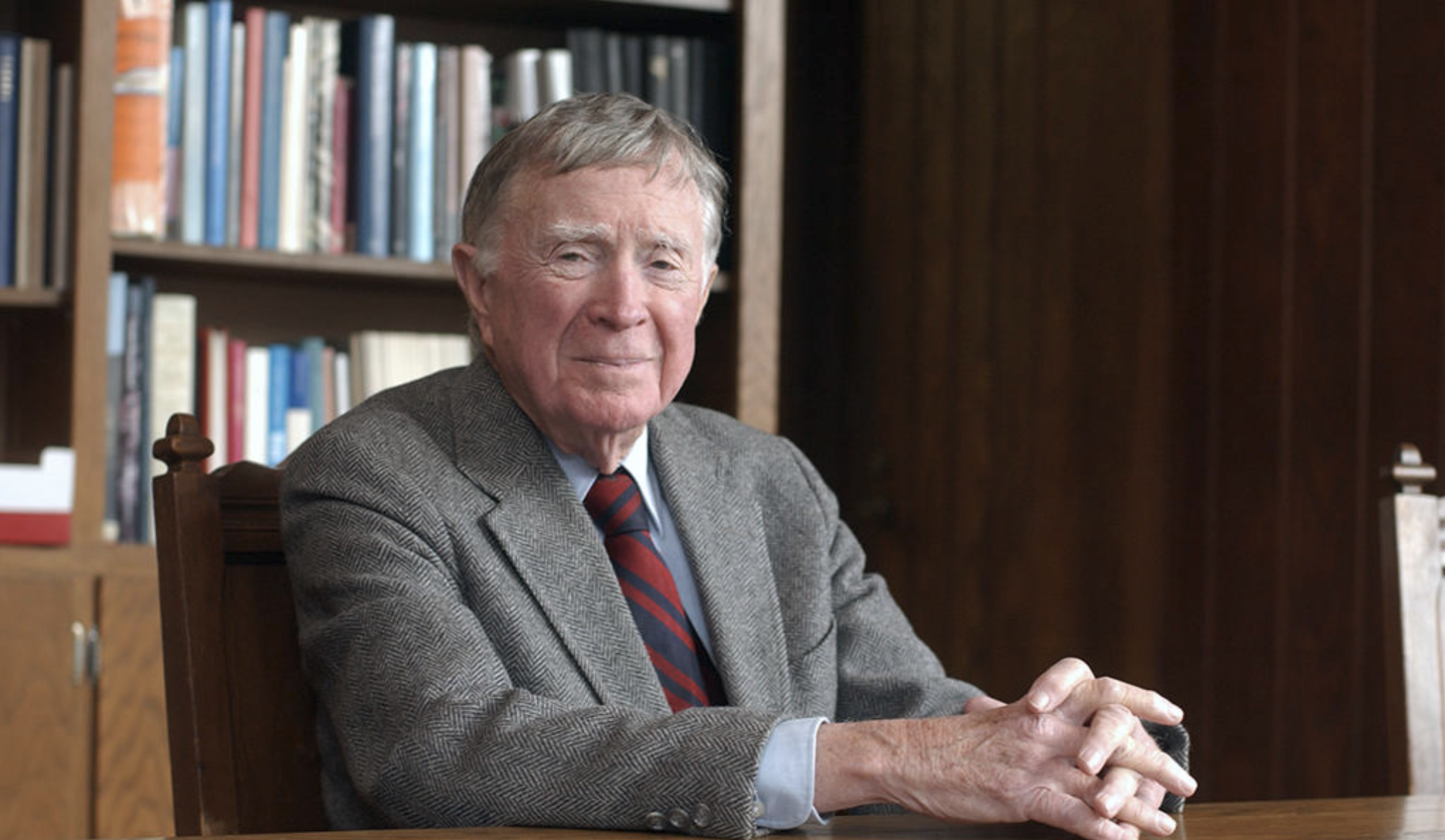
YaleNews
Students sat in the dark in the Yale Law School auditorium, silently anticipating the beginning of the first history of art lecture of the year. Suddenly, a low voice conveyed from the stage. “The caves,” professor emeritus of art history Vincent Scully ’40 GRD ’49 growled. The slides blinked to life, and the Lascaux cave paintings flashed on the screen. In what art history professor and former Dean of Yale College Mary Miller GRD ’81, a teaching assistant for Scully at the time, called a “stunning experience,” Scully transported students to the paleolithic era.
Many former students took to social media to share similar stories after Scully, a beloved Yale professor and influential architectural historian, died Thursday night at his home in Lynchburg, Virginia. He was 97 years old.
Scully taught at Yale for over six decades, from 1947 until 2009. He died from complications of Parkinson’s disease, according to the University, which announced the news.
“No faculty member in Yale’s long history has had greater influence or been more loved. Because of Vince, generations of Yale graduates have learned not just to look, but to see,” University President Peter Salovey said in a statement released on Friday. “Vince loved the cityscapes of his hometown New Haven as much as he loved the buildings and courtyards of his alma mater Yale and throughout his career used these as exemplars of what he cherished. What he believed and what he taught will not be lost because he helped ensure that it is all around us.”
Scully’s popular introductory course in art history attracted so many students that it was often held in the Yale Law School auditorium, one of the only lecture halls big enough to accommodate up to 400 students. Though not an architect himself, Scully taught some of the most prominent architects and designers of the century, including Maya Lin ’81 ARC ’89, who gained national recognition when her design was chosen for the Vietnam Veterans Memorial while she was still an undergraduate.
An influential art critic, Scully was one of the most vocal historical preservationists of the 21st century, according to Miller. He inspired two of his students from the 1970s, Andrés Duany and Elizabeth Plater-Zyberk, to develop the New Urbanism movement. In the late 1990s, he successfully fought to preserve four structures of the Divinity School’s Sterling Quadrangle, which were set to be demolished as part of the Divinity School’s renovation.
“He was really a public intellectual in the best sense for the most important and meaningful things,” said Paul Goldberger ’72, a prominent architectural critic and former student of Scully. “He reminds us that a humanist, like a scientist, has a responsibility to use knowledge to ethical ends.”
The National Building Museum established the Vincent Scully Prize in 1999 to honor people who display “exemplary practice, scholarship or criticism in architecture, historic preservation urban design.” Scully wrote over a dozen books, and he received the National Medal of Arts from former President George W. Bush ’68 in 2004.
Still, Scully considered his lectures his greatest creative achievement. He spent a full day preparing for each one. James Courtright ’63, who majored in the sciences, said he was one of many students who slipped in the back of the auditorium to audit Scully’s lecture. Goldberger said he took Scully’s modern architecture lecture all four years of his Yale career. School of Architecture lecturer Daniel Sherer ’85, a former student and colleague of Scully, called him “the greatest professor at Yale” and described his lectures as “terribly inspiring.”
“He treated architecture as if it were another living being,” Sherer said “He wasn’t saying [architecture] was something cut off from society. He always showed how it was part of society.”
Sherer recounted one class in which Scully showed his students a picture of architect Aldo Rossi’s Teatro del Mundo, a floating theater in Venice built to seat 250 people. Sherer had never seen anything like it before and, at that moment, he decided to become an architectural historian. He now teaches “The History of Architecture I: Antiquity–Baroque.” Sherer said he still uses one of Scully’s book to teach his class.
Scully was born and raised in New Haven and spent much of his life at Yale. He graduated from the University in 1940 with a bachelor’s of the arts in English and later served as master of Morse College from 1969 to 1975.
“He was somebody who could open up a whole new point of view to you. I’m not sure that that model of a charismatic lecturer is really being observed anymore,” Sherer said. “It’s important to preserve and maintain that kind of contact with a charismatic, powerful voice as a teacher.”
Similarly, Miller noted that Scully’s ability to inhabit the material he taught inspired generations of art historians and teachers across diverse fields.
“In the shadow he cast, he not only captured one generation but often three generations of Yale students. There are few Yale faculty members who have had that reach,” Miller said.
Scully is survived by his wife of almost 37 years, Catherine Lynn, three sons, a daughter, five grandchildren and one great-granddaughter.
Adelaide Feibel | adelaide.feibel@yale.edu
This article has been updated to reflect the print version that was published on Dec. 3, 2017.







